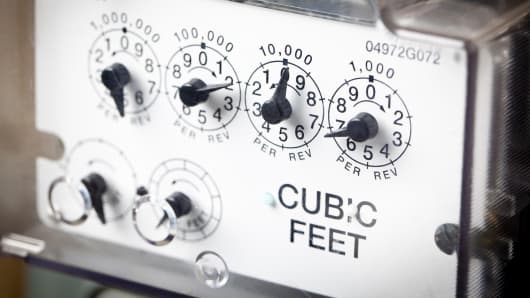Roughly two-thirds of U.S. homes used natural gas in 2009, the latest data available, according to the Energy Information Administration. That accounts for about 20 percent of consumption. Power plants use about a third, with commercial and industrial uses taking up the rest.
Thanks to the ongoing booming in new drilling techniques like hydraulic fracturing—or "fracking"—U.S.natural gas production is expected to continue growing. The EIA forecasts a 5.3 percent increase in 2014 and another 2.1 percent in 2015.
Read MoreBP asks judge to reconsider 'gross negligence' ruling
But even if winters turn mild, some forecasters expect prices to move higher over the next few years as demand continues to rise. Much of that new demand is coming from electric utilities converting older coal-fired power plants to cleaner burning natural gas. Nationwide, gas consumption by electric power producers is up more than 20 percent since 2008
"The upshot is that we continue to expect the price of U.S. natural gas to rise to $6 per million Btus by the end of 2016 compared to around $4 today," said Pugh.
Prices are also expected to vary widely from one part of the country to the next.
As both production and demand has grown, natural gas producers have gradually have increased winter storage capacity—much of it in underground salt domes and other natural formations that act like giant natural gas containers. Total capacity for winter storage is up 18 percent in the last decade.
But supplies are expected to remain tight in parts of the country where pipeline capacity hasn't kept up with expanded production and storage.
Read MoreNatural gas winter outlook
One of the biggest new gas fields—the Marcellus shale in Pennsylvania—produces about 13 billion cubic feet of natural gas per day—or about 18 percent of total U.S. supply. Just four years ago, it was producing just the 2 billion cubic feet a day. New pipelines are being built, but it's not clear whether they'll be able to keep up with the rapid growth in demand much of it coming from power companies switching from coal burning plants to cleaning burning natural gas.
Between 2011 and 2017, New England will have cut its electricity generated from coal by more than half, according to data from Reuters.





